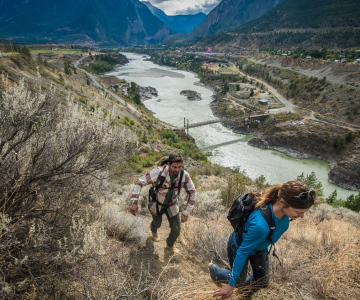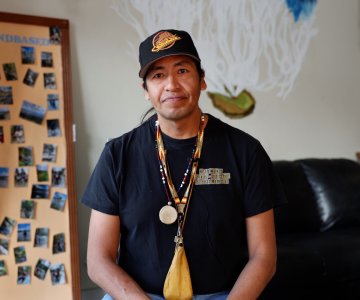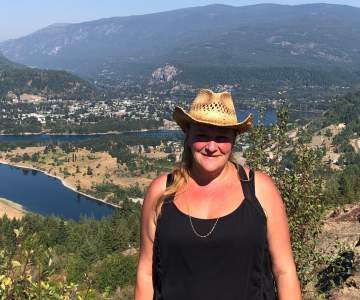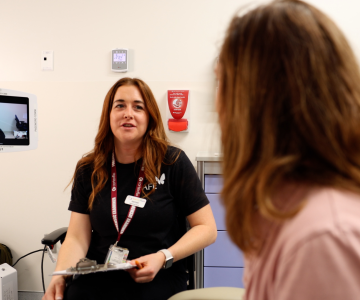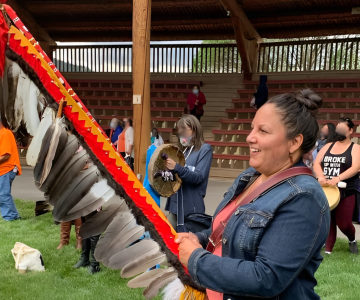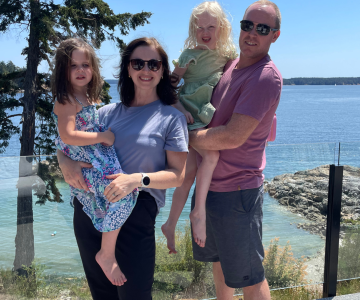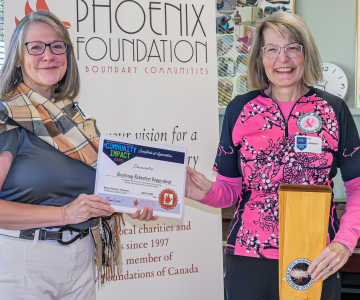Breadcrumb
Explore Stories
Health & Wellness
Spring is here and warmer weather means more people will be spending time outdoors in tall grass or wooded areas. This can also mean an increased chance of getting tick bites.
Ticks are small bugs that bite and feed on the blood of humans and animals and can sometimes transmit disease. Fortunately, there are precautions people can take to prevent illnesses that may be transmitted from tick bites.
Health & Wellness
None of us knows what the future holds. But we can plan for it.
Advance care planning is for everyone! It’s about thinking ahead, talking with those closest to you, and sharing what matters most—before a health crisis happens.
Interior Health’s Advance Care Planning: Your Voice, Your Choice video series teaches about the purpose and importance of advance care planning (ACP) and why it gives peace of mind to you and your loved ones. The series presents different stories and experiences from individuals, family members and health-care providers and offers concrete ideas for you to create your own advance care plan.
Health & Wellness
Derrick Zabotel estimates he’s lost more than 80 family members and friends due to the opioid crisis.
“I have a stack of obituaries this big,” he gestures with his hands. "Grief is one of the hardest things to deal with in life…because you just get over the passing away of a relative or a friend…then you don't even have the time to grieve for that person and there's already another one who's passing away. So it's affected me deeply."
Originally of the Bonaparte First Nation in Cache Creek, Derrick’s Secwépemc name, Snéwt n péllêllkwé7, means Wind over Water. He’s a member of Interior Health’s Peer Advisory and works with ASK Wellness in Kamloops. He hopes to become an Indigenous Peer Navigator to be able to support programs that connect spiritually and culturally with Indigenous People.
In the following video, he shares his story of addiction and grief, and the impact the toxic drug crisis has had on him these past nine years since the declaration of the toxic drug crisis public health emergency in B.C.
Community & Culture
Name: Devon Anne Zimmerman (she/her/hers)Job Title: Administrative AssistantYears of Service: 8Worksite: RemoteCommunity: Fernie, B.C.Ancestral Territory: Ktunaxa Favourite Quote / Advice to live by: You are who you are today because of what you experience in your life. That doesn't mean you are better or worse than anyone. It only means that you have knowledge and lessons to share. Everyone is different and that's what makes the world so exciting. If everyone was the same, the world would be a very boring place.
Devon Zimmerman has been working in various positions at Interior Health (IH) since 2017, and as an administrative assistant to the director of Health System Planning (HSP) for the past two years. She lives in Fernie, B.C. with her two teenage sons, and works remotely from home.
Health & Wellness
Exit Page Quickly
If you or someone you know has experienced sexual assault, help is available at your closest emergency department.
The Interior Health (IH) Sexual Assault Forensic Examination (SAFE) Program offers a compassionate, confidential and supportive environment for those who have experienced sexual violence. This program ensures patients receive immediate medical and forensic care, regardless of whether they wish to report the assault to the police.
Community & Culture
Lenora holds the Interior Salish Missing and Murdered Indigenous Women and Girls staff on May 27, 2021, at the Tk'emlúps te Secwépemc gathering after they confirmed the discovery of the unmarked graves of 215 children who were students at the former Kamloops Indian Residential School.
Name: Lenora Anne Starr, “Cílcelnak”
Job Title: Indigenous Cultural Safety Practice LeadYears of Service: Five monthsWorksite: MerrittCommunity: Interior Health regionAncestral Territory: Home: St’át’imc Nation; Current residence: Nlaka’pamux NationFavourite Quote / Advice to live by:
“Cw7áozas lhápenem ta nt’ákmenlhkalha múta7 ta nqwaluttenlhkálha” (We will not forget our way of life and our language)
“Ci wa lh kalth ti tmicwa” (The land is ours)
“To be nobody but yourself in a world which is doing its best day and night to make you everybody else means to fight the hardest battle which any human being can fight and ever stop fighting.” - E.E. Cummings
St’át’imc is Lenora’s home Nation and where her heart will always reside, and she still frequents regularly. Nlaka’pamux is Lenora’s husband’s Nation and where they currently reside.
Lenora has been with Interior Health (IH) for less than a year as the Indigenous Cultural Safety Practice Lead. Lenora has two sons, a loving husband, a daughter-in-law, one granddaughter, horses, cats and one very entertaining French Bulldog. Lenora spends most of the working day in a home office elbows deep in policy work, taking the smudging guidelines into a more formal policy for IH.
Lenora and her husband, Arnie Lampreau, have been on evacuation from their community of Shackan since 2021 due to the atmospheric river that left their ranch below the new flood plain. Lenora says that negotiations with Indigenous Services Canada for safer new reserve lands is painfully slow and being forced to live in a rental in town is extremely frustrating. Lenora looks forward to eventually getting re-established in a new home, with a renewed sense of permanency and stability, having horses in the back yard again, and seeing the family enjoy the ranching lifestyle once again.
This spring, Lenora looks forward to getting into IH hospitals to research existing and needed culturally safe spaces and assisting in bringing improvements to fruition.
Health & Wellness
Content warning: This story deals with abuse, substance use and suicide.
Trauma has long been recognized as a powerful force that can shape a person’s life, impacting not just their emotional and psychological health, but physical well-being as well.
When trauma happens, especially early in life, it has the potential to change how the brain develops. It can disrupt our body’s ability to regulate stress hormones and affect key areas of the brain that control our emotions and behaviours.
In this story, learn about trauma and its effects on our brains, nervous system and peoples' lives. You'll also hear from Linnea, a Peer Volunteer with Interior Health. Linnea shares her story of trauma and substance use, displayed as quotes throughout the story. We also share some of her poetry and photography that she posts on Instagram.
Health & Wellness
Dr. Miriam Oliver is a pediatrician and the head of the Department of Paediatrics at Penticton Regional Hospital. She's also a mother of two who feels strongly about protecting children and our community from preventable disease.
She shared with us her professional experiences with young, unvaccinated patients and their families, and urges everyone to take measles seriously.
Community & Culture
Foundations in the Interior region raise funds that support medical equipment, care needs, and innovative local initiatives in their communities. Each organization includes respected community leaders, volunteers and staff who are passionate about meeting the needs of patients and families in Interior Health. Thanks to the generosity of their supporters, we all have a stronger health system.
In this next story of our series on the incredible health-care and hospital foundations throughout our region, we interviewed Sandra (Sandy) Wade, executive director of the Phoenix Foundation of the Boundary Communities.
-
Load More
Showing 108 of 817
Sign up for email updates
Receive news, alerts, public service announcements and articles right to your inbox.


